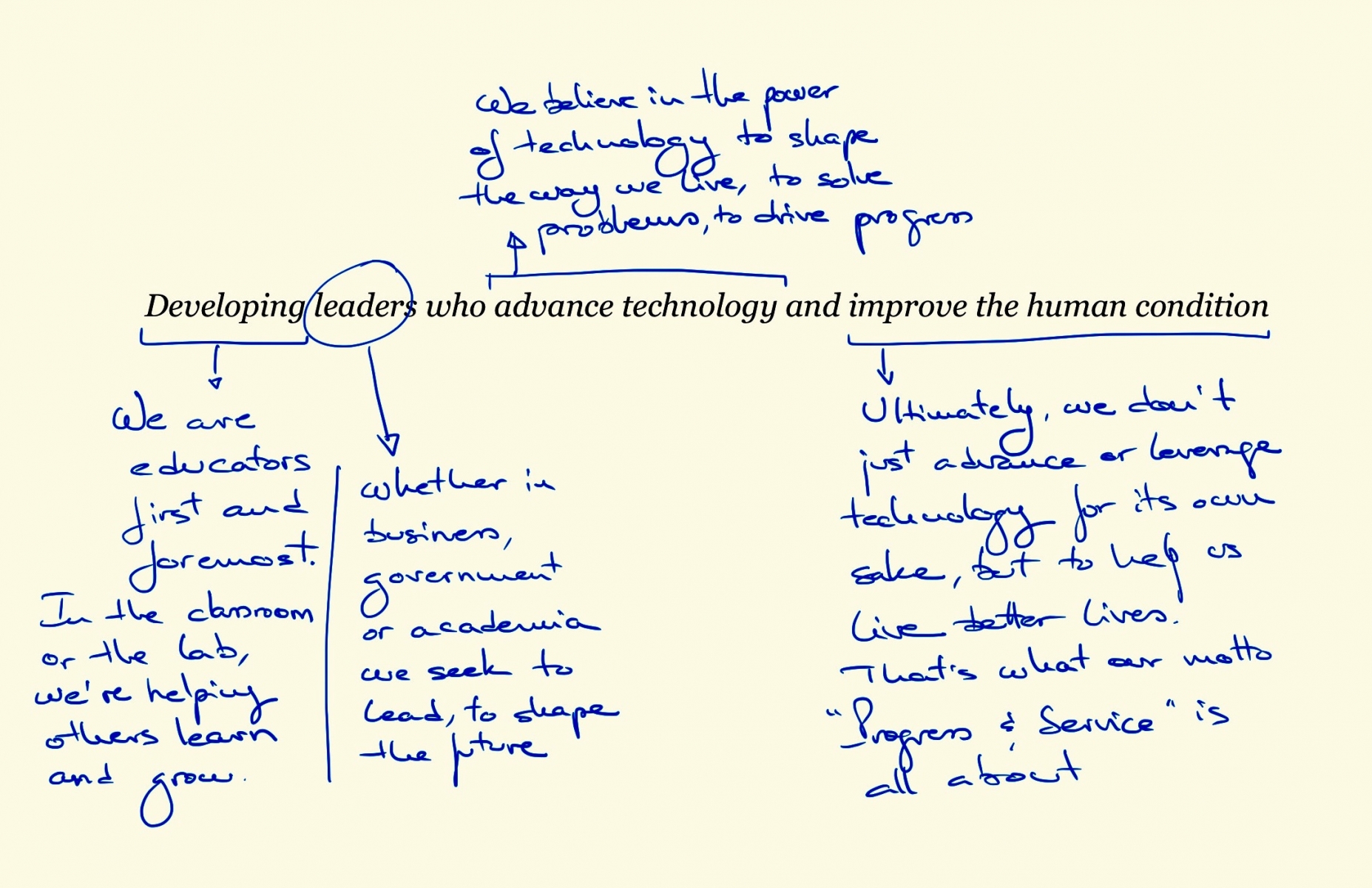Successful organizations are grounded in a strong sense of purpose and values. They stand for something. They are bound by a shared mission and find inspiration in something that matters to their members. For some it may be beating a common rival (think “I’m a Mac, I’m a PC”) or winning a race (e.g. be the biggest, reach the highest ranking, etc.). For the very best organizations though, success is about delivering on something bigger than themselves, about making a positive difference in the lives of others, and ultimately making the world a better place.
The mission of Nike is “to bring inspiration and innovation to every athlete in the world,” (and no, they are not giving up on market share as they define “athlete” as including “all of us.”) The mission of The New York Times is to “seek the truth and help people understand the world,” in order to make our lives richer, our society stronger and more just (and yes, in their view, selling more subscriptions helps enrich more lives). The mission of the National Geographic Society (which, for full disclosure, I participated in writing) is “to illuminate and protect the wonder of our world,” a statement that has helped the Society shift its main focus to scientific exploration, education and storytelling after it outsourced its commercial assets.
Of course, the real test of a good mission is whether it is fully embedded in the culture and everyday practices of the organization — and not collecting dust on a shelf. Yet having it clearly articulated is an essential first step to get there. Which brings me to Georgia Tech.
Soon after I arrived last September, we embarked on a process to rewrite our mission, our values, and our vision for this decade. Eventually, this work will lead to a new strategic plan. But for a plan to be of any use, it is essential that it be based on a shared sense of purpose, a narrative of what we are trying to accomplish together, a collective belief in why we exist.
To get there, we used a technique called “appreciative inquiry,” that reached more than 5,700 people — students, faculty, staff, alumni, donors, CEOs, entrepreneurs, community leaders — through a host of workshops, interviews and online channels. Our own strategic consulting group collected, analyzed and integrated that input. And a steering committee of more than 60 people representing multiple constituencies, and chaired by Deans Steve McLaughlin in the College of Engineering and Maryam Alavi in the Scheller College of Business, interpreted the data to help us write a first draft document — “A New Narrative: Inclusive Innovation for a Better Future.”
The hardest part of the process was to distill our shared sense of purpose to one sentence. Ultimately, we decided that, at our core, we are committed to:
“developing leaders who advance technology and improve the human condition.”

Ten words is not much real estate. Every word matters. This is why we chose them:
- Whether in the classroom or the lab, our top concern is always helping others learn and grow. We are educators at heart.
- We aspire to lead, to set trends, to shape the future. That applies to members of our community who build businesses, set policy, or work in academia.
- We carry “technology” in our name and are proud of it. We believe in the power of technology to change the way we live, and to solve the problems we face. We noted other technological universities elude the “t” word in their mission statements. We own it.
- We ultimately strive to make life better for people in our community and around the world. We don’t develop or leverage technology for its own sake, but with the purpose of improving the human condition.
- An earlier version used “to” instead of “and.” We concluded it was too constraining. Many members of our community do not advance technology per se, but use it, critique it, analyze it or develop the underlying science. We decided “and” was more inclusive of our reality and aspiration.
What do you think? I invite you to be part of the conversation.
